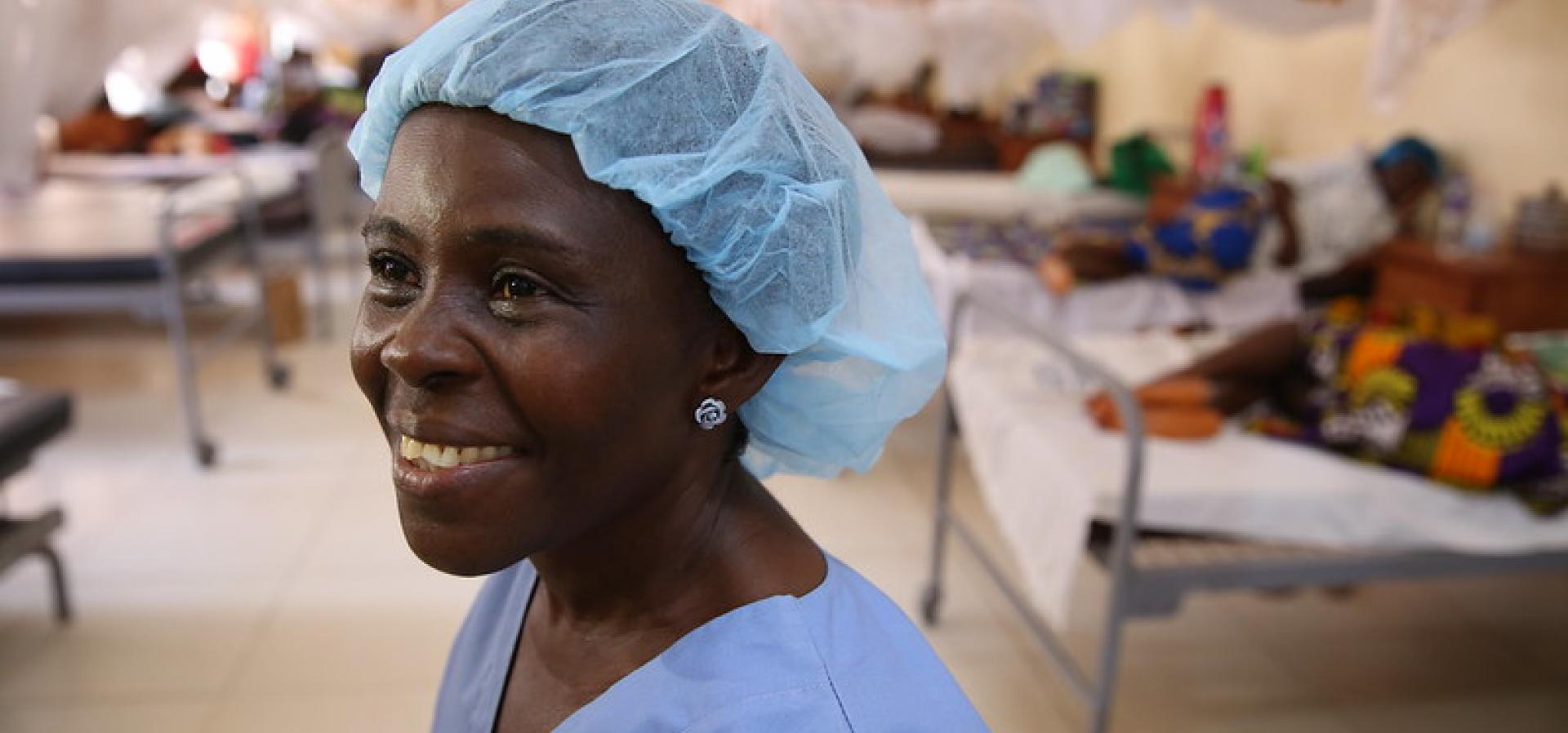
Blog | December 23, 2024
by: Priya Basu, Executive Head, the Pandemic Fund
As 2024 closes and the new year approaches, here at the Pandemic Fund we have a great deal to celebrate. In the two years since it was officially launched in November 2022 at the G20 leaders’ summit in Bali, Indonesia, the Pandemic Fund has moved with speed to increase support for low- and middle-income countries to build their capacity to detect, prevent, and rapidly respond to emerging pandemic threats. In October, the Pandemic Fund completed its second funding round and has now awarded grants totaling US$885 million that have mobilized an additional $6 billion in international co-financing and country co-investments — to benefit 75 countries. The leverage ratio of over 1:7 achieved to date demonstrates the Pandemic Fund’s promise as a force multiplier for a safer world.
As highlighted in our newly released inaugural progress report, the first round of Pandemic Fund grants are already delivering results in our three priority investment areas of pandemic surveillance, laboratory systems, and health workforce. For example, Ethiopia is building an electronic alert system and is shoring up its health workforce and supply chains to provide surge capacity. Cambodia is building a national veterinary vaccine center and connecting wildlife and human health surveillance systems for faster detection of emerging pathogens with pandemic potential. The Caribbean Public Health Agency is fostering collaboration among countries across the region to share information and ensure their vital tourism sectors are ready for future public health emergencies, including the increasing onslaught of superstorms fueled by climate change. As of the end of the reporting period on June 30, more than 3500 health workers had already been trained, including laboratory staff, community health workers, and animal health professionals.
The Pandemic Fund is demonstrating the power of global solidarity and collective action. Pandemic Fund projects are catalyzing coordination among partner organizations within and across countries. They are promoting multisectoral collaboration, helping to operationalize One Health and whole-of-government approaches to pandemic prevention, preparedness and response (pandemic PPR), with a strong focus on gender and health equity and community engagement. This truly is a global effort: Our Governing Board is comprised of representatives of investor and co-investor countries, foundations, and civil society around the world. Our Technical Advisory Panel (TAP) is comprised of diverse international experts who have lent their time and expertise to review hundreds of funding proposals. Partner countries and Implementing Entities are working together to ensure that Pandemic Fund grants are targeting the most urgent gaps in pandemic PPR. This collaboration is bolstering country leadership and promoting greater coherence and alignment across the global health financing architecture.
While working to safeguard the future, the Pandemic Fund has also taken steps to respond to current outbreaks, such as mpox. Soon after WHO declared mpox a public health emergency, in September the Pandemic Fund responded by fast-tracking the approval of US$129 million in grant financing for 10 mpox-affected African countries. This support bolsters country and regional capacity essential to strengthening health security while also addressing immediate response needs. Learning from this experience, the Governing Board is now considering how the Pandemic Fund can best enable rapid surge financing in future health emergencies.
The Pandemic Fund’s medium-term strategic plan approved in May lays out a comprehensive path toward a world better equipped to manage pandemic threats. Over the next five years, the Pandemic Fund will continue to focus on its initial three programmatic priorities for investment — surveillance, laboratory systems, and health workforce — as well as on strengthening two cross-cutting enablers of pandemic PPR: National Public Health Institutes and regional and global networks, organizations, or hubs. In our commitment to ongoing learning and adaptation, we are continuing to strengthen and sharpen the Pandemic Fund’s Results Framework. As the mpox response demonstrated, we are also committed flexibility and responsiveness to evolving contexts and priorities within the pandemic PPR landscape to maximize the impact of Pandemic Fund support.
Yet a huge gap remains between country needs and ambitions and existing global resource commitments. Low- and middle-income countries are demonstrating that they understand the health, economic, and social risks of another pandemic and do not want to be caught unprepared again. Demand for Pandemic Fund grants has been extremely high: the second call for proposals generated US$4.6 billion in funding requests from 140 countries, far exceeding available resources to date. Underscoring the Pandemic Fund’s value-add in filling critical capacity gaps, at least 20 health ministers from Africa have made strong calls for an adequately funded Pandemic Fund, and 115 civil society organizations also issued an open letter urging world leaders to prioritize additional investments in the Pandemic Fund.
In July, we kicked off our resource mobilization campaign with a short-term fundraising goal of an additional US$2 billion as the minimum required to implement the strategic plan over the next two years. Since the kickoff event on July 24, followed by a pledging event in Rio on October 31 hosted by Brazil’s G20 presidency and other announcements, governments have made new commitments totaling up to US$1 billion thus far — over halfway toward our goal. As our resource mobilization campaign continues through Spring 2025, my hope for the new year is that more governments, philanthropies, and private sector partners will step up and contribute additional funds to this global collective which benefits all.
I am proud of how far the Pandemic Fund has come in these first two years. With the support of our Governing Board and partners, and our small but dedicated Secretariat team, we have achieved many milestones in a relatively short period of time. Yet we still have far to go on our journey to make humanity safer from pandemics, and this is the time to accelerate our efforts. The recent outbreaks of mpox, Marburg, avian flu, an unknown respiratory virus in DRC, and dozens of other infectious disease outbreaks circulating around the globe underscore the urgency to act.
Last Updated: February 7, 2025

